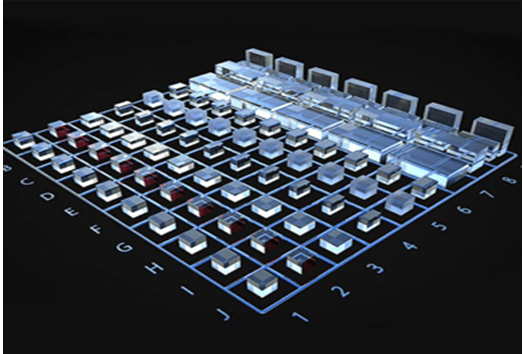Storage infrastructures are the foundation of data centers as they house data owned by private individuals, enterprises, or government institutions. There are numerous types of data centers to serve the requirements of different application areas, such as cloud storage, the (industrial) internet of things, or business models, including software as a service or streaming portals, among others.
Data must be available as soon as possible in some cases. In other cases, storing the data in a structured manner takes precedence. All data centers have one thing in common: they handle massive amounts of data for business and consumer applications.
Data Centers Today
Data storage technology in data centers mainly consists of hard disk drives (HHD), solid-state drives (SSD), and tape storage. The importance of SSDs will increase exponentially as the future storage technology in data centers. While HDDs continue to provide the highest storage capacity per cost, SDD technology offers significantly higher performance, with reading and writing speeds far exceeding HDD capabilities.
High-speed performance at low latency, for instance, will play a larger role in challenging fast data storage with 5G wireless communication networks. The general trend in data center storage technology will be mixed or hybrid systems that combine SDD, HDD, and tape storage to meet high-speed demands while still profiting from HDD storage’s unrivaled minimal price.
HDD manufacturers, for instance, are attempting to integrate the SSD-typical NVMe protocol natively into HDD storage devices to enhance the compatibility of traditional HDD storage in a future SDD-heavy environment in data centers. The preliminary experimental results have been encouraging, with sample units expected to be ready soon.

Image Credit: Iridian Spectral Technologies
The Importance of Interconnects
The data center interconnects technology, which is typically based on fiber optic cables and conventional copper cable interconnects. This is just as important as the data storage technology itself. Fiber optic cables are seen as the future choice for data center interconnects, not only for external connections but also within the data center infrastructure, as the demand for ultra-fast accessibility continues to rise.
Single-mode or multimode fiber optic cables connect data center hardware to each other and to the outside world. Transceiver modules are the interconnection components used to send and receive data from an electronic device via optical fibers. Fiber networks use single-mode or multimode transceivers depending on the fiber type. Multimode fiber connections are mostly used in data centers because their total costs are still substantially lower than single-mode connections.
The light source on the device, which can be an LED, VCSEL, or lasers of various types such as DBR, DFB or Fabry-Perot, or tunable laser assemblies, is one cost-related difference between multimode and single-mode transceivers. LEDs or VCSELs used in multimode devices are less expensive than lasers used in single-mode transceivers. Multimode fibers transmit a wider range of wavelengths than single-mode fibers, but the transfer distance is much shorter. Nonetheless, multimode fiber lengths are generally adequate for data center use.
For wavelength division multiplexing, transceivers heavily rely on interference filters. Shortpass and longpass filters are used to separate or combine wavelengths. Tunable lasers and transceivers are becoming more popular as a result of technological advances and lower tunable device costs.
Merging tunable lasers and wavelength division multiplexing will broaden network capabilities even with data center fiber infrastructures. Further filter types, such as notch filters or dichroic filters, are required for tunable laser integration in transmitter devices. Solid etalon filters provide wavelength selectivity and tunable wavelength locking to integrated tunable laser assemblies (ITLAs).
Optical Connections for Data Centers
Since large quantities of transceiver devices and fiber optic cables are needed, total costs for data center interconnects play an important role. Supplying high optical performance at the lowest possible cost is critical for datacom filter manufacturers.
Iridian designs and manufactures custom-tailored optical filters or etalons to meet the datacom filter solution requirements for optical quality, robustness, reliability, and cost-sensitivity.

This information has been sourced, reviewed and adapted from materials provided by Iridian Spectral Technologies.
For more information on this source, please visit Iridian Spectral Technologies.